Is the global public tuning out the climate change debate?
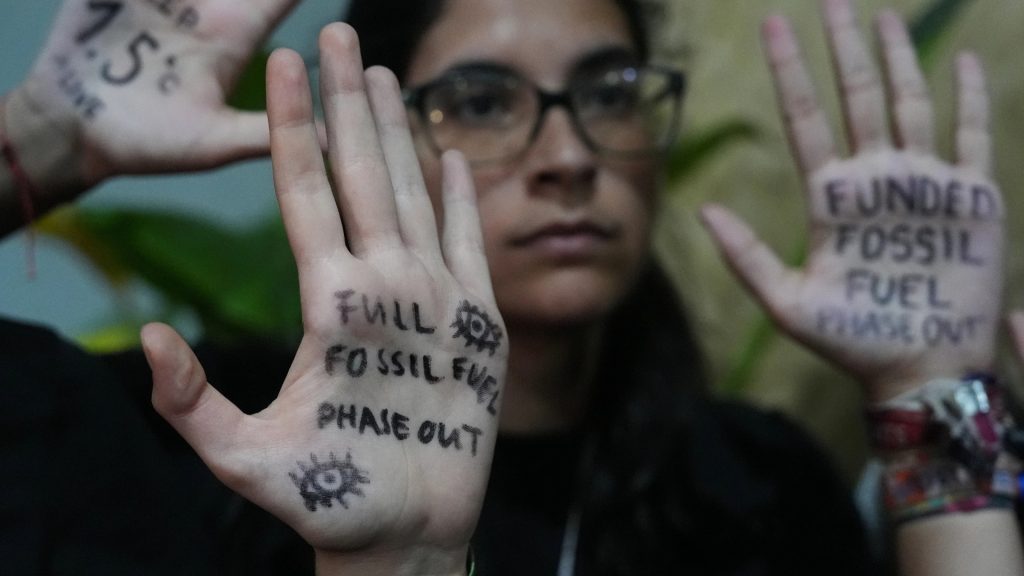
Divisions mark the last days of the UN climate summit in the Brazilian city of Belem. Division marked the COP30 climate summit in Brazil as countries struggled to reach a consensus on several sticking points, including a push to phase out fossil fuels. As the world seeks to address the climate crisis, experts say scientists, politicians, media and business all have a role to play in keeping the public engaged. Recommended Stories list of 3 itemsend of list But are they succeeding? Presenter: Neave Barker Guests: Professor John Sweeney – Contributor to the Intergovernmental Panel on Climate Change’s (IPCC) Nobel Peace Prize-winning assessment report Professor Allam Ahmed – Leading scholar in sustainable development and the knowledge economy Michael Shank – Climate communication expert and former director of media strategy at Climate Nexus Published On 22 Nov 202522 Nov 2025 Click here to share on social media share2 Share Adblock test (Why?)
Russia-Ukraine war: List of key events, day 1,368
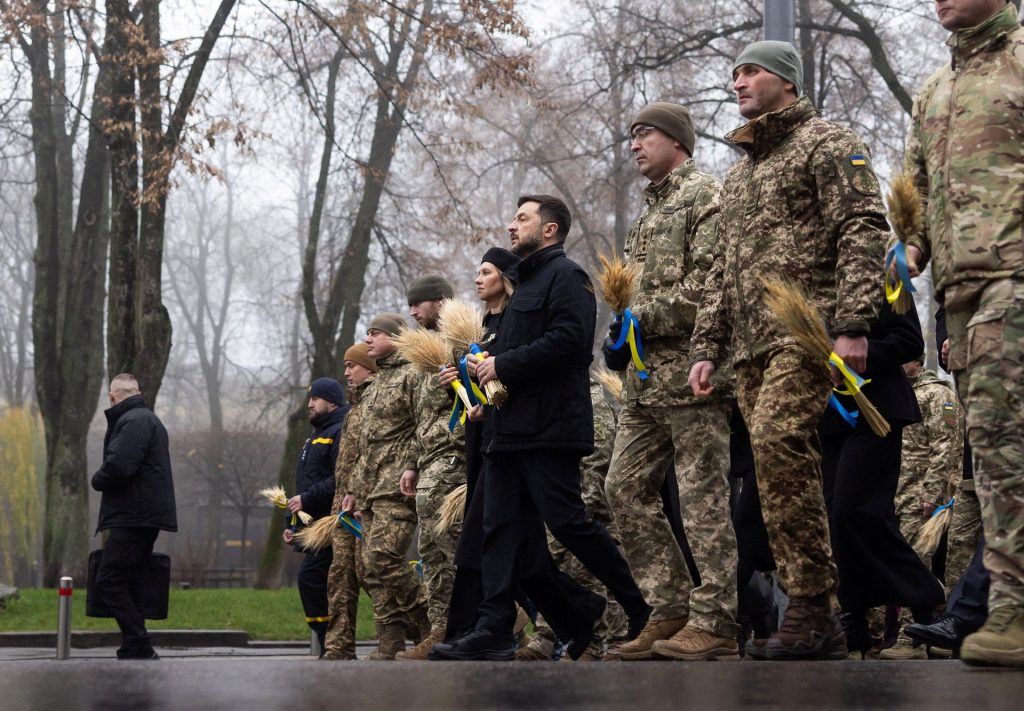
Here are the key events from day 1,368 of Russia’s war on Ukraine. Published On 23 Nov 202523 Nov 2025 Click here to share on social media share2 Share Here’s where things stand on Sunday, November 23. Trump’s plan Officials from Ukraine, the United States, and the European Union are set to hold talks in Geneva to discuss US President Donald Trump’s proposed 28-point plan for ending the war with Russia. Trump, who initially demanded Ukraine accept his plan by Thursday, told reporters on Saturday that the proposal was not his final offer. “We’d like to get to peace. One way or another, we’ll get it ended,” he said. Ukrainian President Volodymyr Zelenskyy said on Saturday that he has signed a decree approving the composition of Kyiv’s delegation to the talks. “Our representatives know how to defend Ukraine’s national interests and exactly what must be done to prevent Russia from launching a third invasion,” he wrote in a social media post, adding that Russia’s “crimes” should not be “rewarded”. European and Western leaders welcomed Trump’s plan in a statement on Saturday, but said the draft requires “additional work”. They also pushed back against some of its elements, including the ceding of territory to Russia and limits on the size of the Ukrainian military. “We are clear on the principle that borders must not be changed by force,” they said. German Chancellor Friedrich Merz stressed the need for Ukraine to be involved in any resolution of the conflict and to decide its own fate. “Wars cannot be ended by major powers over the heads of the countries affected,” he told reporters. The leaders of eight Nordic-Baltic countries released a separate statement, reaffirming their commitment to support Ukraine, including by continuing to arm its military. “We have, from the outset of Russia’s war of aggression, stood by Ukraine’s side, and we will continue to do so,” they said. In Washington, DC, Trump’s proposal continued to face opposition from Democrats and some Republican hawks in Congress. Senator Angus King called it one of the worst “geopolitical mistakes” he has ever seen. Advertisement Fighting Russian forces launched more than 60 strikes on the Nikopol district of Ukraine’s Dnipropetrovsk region, killing at least one person and wounding five others, according to local officials. Another Russian strike on a store in Ukraine’s Zaporizhia wounded five people, while Russian shelling killed three people, including two women in Kherson, officials said. The State Emergency Service of Ukraine said it ended its search and rescue operation following the deadly Russian missile attack in Ternopil in the west of the country on November 19. The final death toll of that attack was 33, including six children, according to the agency. Ninety-four others were also wounded. Russia’s Ministry of Defence said its forces captured two villages in eastern Ukraine – Zvanivka in Donetsk and Nove Zaporizhzhia in the Zaporizhia region. The claim came as Ukraine’s Kyiv Independent reported that Russian forces appear to have captured more than 15 villages in Zaporizhia. It cited the Finnish open-intelligence collective, the Black Bird Group. The months-long battle for the town of Pokrovsk in Donetsk also continued, with Russia’s TASS news agency reporting that Russian troops have “encircled Ukrainian units” in several neighbourhoods there. For its part, the Ukrainian military said Russian attempts to reach the town’s centre were unsuccessful and that its forces were holding designed lines in northern Pokrovsk. Adblock test (Why?)
Airlines cancel Venezuela flights amid US warnings and military buildup

Six international airlines have suspended flights to Venezuela after the United States warned major carriers about a “potentially hazardous situation” due to “heightened military activity” around the South American country. Spain’s Iberia, Portugal’s TAP, Chile’s LATAM, Colombia’s Avianca, Brazil’s GOL and Trinidad and Tobago’s Caribbean all halted flights to the country on Saturday, the AFP news agency reported, citing Marisela de Loaiza, the president of the Venezuelan Airlines Association. Recommended Stories list of 3 itemsend of list TAP said it was cancelling its flights scheduled for Saturday and next Tuesday, while Iberia said it was suspending flights to the Venezuelan capital, Caracas, until further notice. TAP told the Reuters news agency that its decision was linked to the US notice, which it said “indicates that safety conditions in Venezuelan airspace are not guaranteed”. According to the AFP news agency, Panama’s Copa Airlines, Spain’s Air Europa and PlusUltra, Turkish Airlines, and Venezuela’s LASER are continuing to operate flights for now. The flight suspensions come as tensions between the US and Venezuela soar, with Washington deploying troops as well as the world’s largest aircraft carrier to the Caribbean, as part of what it calls an anti-narcotics operation. Caracas, however, describes the operation as a bid to force Venezuelan President Nicolas Maduro out of power. The US military has also carried out at least 21 attacks on alleged drug boats in the Caribbean and the Pacific, killing at least 83 people. The campaign – which critics say violates both international and US domestic law – began after the administration of President Donald Trump increased its reward for information leading to the arrest or conviction of Maduro to $50m, describing him as the “global terrorist leader of the Cartel de los Soles”. President Trump, meanwhile, has sent mixed signals about the possibility of intervention in Venezuela, saying in a CBS interview earlier this month that he doesn’t think his country was going to war against Caracas. Advertisement But when asked if Maduro’s days as president were numbered, he replied, saying, “I would say yeah.” Then, on Sunday, he said the US may open talks with Maduro, and on Monday, when asked about the possibility of deploying US troops to the country, he replied: “I don’t rule out that. I don’t rule out anything. We just have to take care of Venezuela.” Days later, on Friday, the US Federal Aviation Agency (FAA) urged all flights in the area to “exercise caution” due to the threats “at all altitudes, including during overflight, the arrival and departure phases of flight, and/or airports and aircraft on the ground”. Ties between Washington and Caracas have been dominated by tensions since the rise of Maduro’s left-wing predecessor, Hugo Chavez, in the early 2000s. The relationship deteriorated further after Maduro came to power following Chavez’s death in 2013. Successive US administrations have rejected Maduro’s legitimacy and imposed heavy sanctions on the Venezuelan economy, accusing the president of corruption, authoritarianism and election fraud. The Trump administration has hardened the US stance. Last week, it labelled the Venezuelan drug organisation, dubbed Cartel de los Soles (Cartel of the Suns), a “terrorist” group, and it accused Maduro of leading it, without providing evidence. In recent weeks, conservative foreign policy hawks in the US have been increasingly calling on Trump to topple the Maduro government. Maduro has accused the US of inventing “pretexts” for war, repeatedly expressing willingness to engage in dialogue with Washington. But he has warned that his country would push to defend itself. “No foreign power will impose its will on our sovereign homeland,” he was quoted as saying by the Venezuelan outlet Telesur. “But if they break peace and persist in their neocolonial intentions, they will face a huge surprise. I pray that does not occur, because – I repeat – they will receive a truly monumental surprise.” Venezuelan opposition leader Maria Corina Machado, who recently won a Nobel Peace Prize, suggested that overthrowing Maduro would not amount to regime change, arguing the president lost the election last year and rigged the results. “We’re not asking for regime change. We’re asking for respect of the will of the people and the people will be the one that will take care and protect this transition so that it is orderly, peaceful and irreversible,” she told The Washington Post on Friday. Machado, 58, has called for privatising Venezuela’s oil sector and opening the country to foreign investments. Advertisement Adblock test (Why?)
Aftershock shakes Bangladesh as earthquake death toll rises to 10
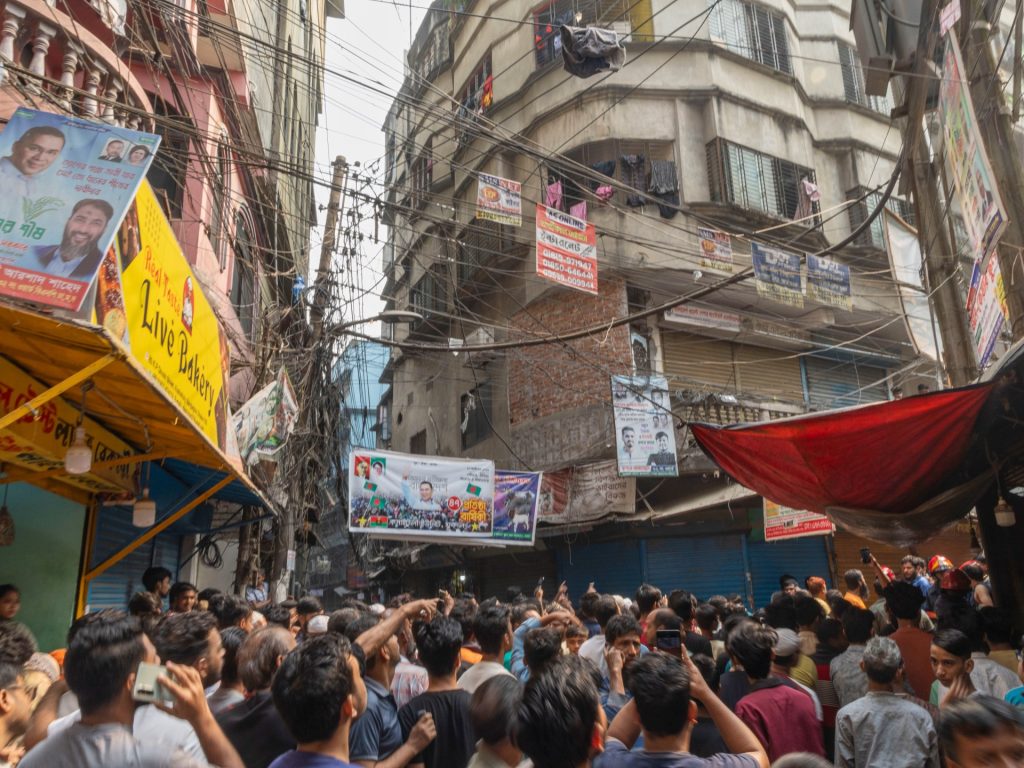
Friday’s earthquake was felt in the capital Dhaka and neighbouring districts, causing destruction and panic. A low-magnitude tremor shook Bangladesh, the national meteorological service has said, a day after a powerful earthquake struck near the capital, Dhaka, killing at least 10 people. Updating earlier tolls from Friday’s magnitude 5.5 earthquake, disaster management official Ishtiaqe Ahmed said on Saturday that “the number of casualties has reached 10, while a few hundred were injured”, according to the AFP news agency. Recommended Stories list of 3 itemsend of list Friday’s earthquake was felt in Dhaka and neighbouring districts, causing widespread destruction and panic. Omar Faruq of the Bangladesh Meteorological Department said another minor jolt was recorded on Saturday at 10:36am (04:36 GMT). The epicentre of the magnitude 3.3 tremor was in Ashulia, just north of the capital, the meteorologist told AFP. Aftershocks are common after powerful earthquakes, but for some in Bangladesh, it has added to fears of an even greater disaster. “I don’t feel safe yet, as there was another jolt this morning in Ashulia. Maybe we are next,” said Shahnaj Parvin, who lives near the epicentre of Friday’s earthquake and had never experienced anything like that before. Cracks have developed in dozens of houses in her area, she said. “I was hanging my children’s clothes on the washing line when the tremor struck,” added Parvin. The government has activated Bangladesh’s emergency operation centre to assess the scale of the damage and to coordinate relief and rescue operations. Rubayet Kabir of the Meteorological Department’s Earthquake Observation and Research Centre said Bangladesh’s geography makes the country of 170 million people prone to earthquakes. Advertisement “Some small tremors are expected after any major earthquake,” Kabir said. “There has been no massive earthquake in the last 100 years or more, but Bangladesh has been vulnerable for quite some time,” he told AFP. On Friday, after the earthquake struck, Shadman Sakif Islam, a Dhaka resident, told Al Jazeera that “small ripples” he noticed in his coffee were followed by a “massive shake that started occurring without any warning” as the earth shook. “My chair and the table started shaking wildly, and I was stuck there for 10-15 seconds without processing what was going on,” he added. “I never felt anything like this in my whole life … I felt like riding on a boat, riding massive waves one after another,” the resident added. Al Jazeera’s Tanvir Chowdhury, reporting from Dhaka, said on Friday, “It was one of the biggest earthquakes in recent history and was very close to the capital city. The entire city was in panic.” Adblock test (Why?)
Israeli violence in the West Bank is spiralling
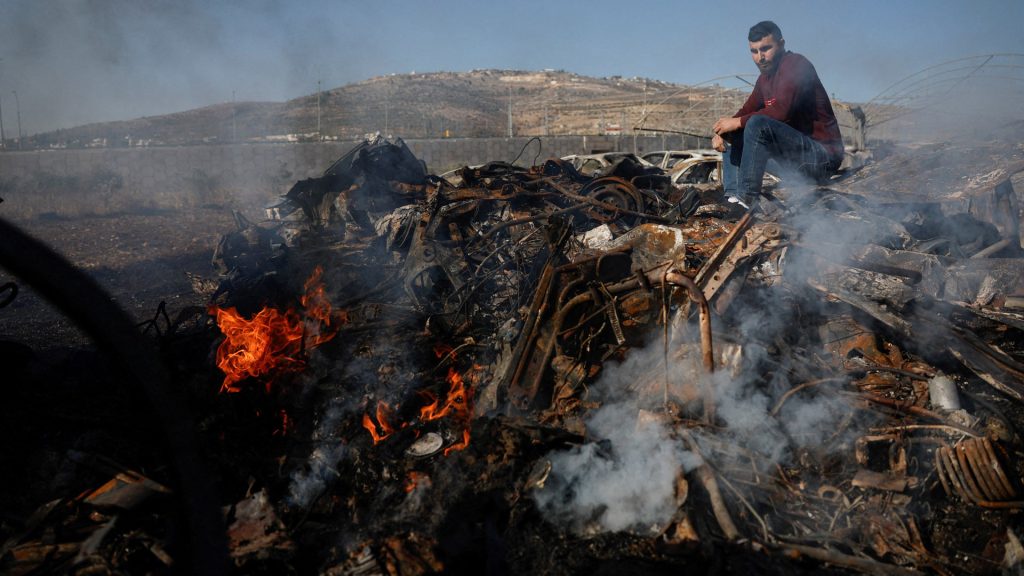
Violence is out of control in the West Bank – and the few covering it are being assaulted. In the West Bank, record levels of Israeli settler violence against Palestinians are unfolding with little mainstream coverage. The few journalists who try to report on it often face attacks themselves. When the violence is covered, the settlers are often framed as fringe actors, despite clear backing from the Israeli state. A de facto annexation is under way in the West Bank, and yet much of the international media continues to look away. Contributors:Ben Reiff – Senior editor, +972 MagazineJasper Nathaniel – JournalistLeila Warah – Bethlehem-based journalistMariam Barghouti – Ramallah-based journalist On our radar As the rhetoric coming out of the Trump administration calling for the removal of Venezuelan President Nicolas Maduro intensifies, much of the United States media is echoing that language. And with journalists branding Venezuela a “narco-state,” critics warn that the news media – much like in the lead-up to the Iraq War – is making the case for US military intervention. Defossilising the truth: Fighting fossil fuel disinformation As the COP30 climate summit in Belem wrapped up this week, we spoke with UN Special Rapporteur on climate change and human rights Elisa Morgera about a major barrier to real climate action: disinformation. Her latest report lays out how climate justice activists and policymakers are battling decades of coordinated greenwashing by some of the world’s biggest fossil fuel companies – efforts that continue to delay and undermine meaningful progress at this critical moment. Featuring:Elisa Morgera – UN Special Rapporteur on climate change and human rights Published On 22 Nov 202522 Nov 2025 Click here to share on social media share2 Share Adblock test (Why?)
Deadly skies: Why Nepal is one of the most dangerous places to fly

101 East takes to the skies in Nepal and investigates the Himalayan nation’s aviation crisis. Nepal is experiencing an aviation emergency. Nestled in the Himalayas, the South Asian nation is one of the most dangerous places in the world to fly. Since 2010, there have been nearly 40 crashes involving aircraft of all sizes, from helicopters to double-engine planes, resulting in hundreds of deaths. Aviation is critical to Nepal’s tourism industry, one of the country’s main economic drivers, but critics say urgent action is needed before more people are killed. 101 East takes to the skies in Nepal and meets those affected by aviation tragedies to examine an industry in crisis. Published On 22 Nov 202522 Nov 2025 Click here to share on social media share2 Share Adblock test (Why?)
More details of US plan for Ukraine emerge, sees territory ceded to Russia
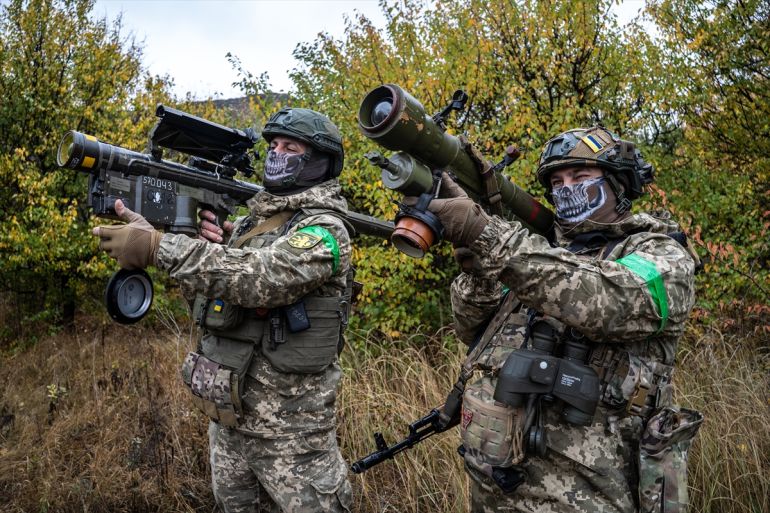
More details are emerging from a 28-point peace plan backed by United States President Donald Trump aimed at ending Russia’s four-year war on Ukraine, with several media outlets and officials confirming that the plan, which has yet to be officially published, appears to favour Russia. Details of the plan also come after US ambassador to the United Nations, Mike Waltz, told the UN Security Council on Thursday afternoon that the US had offered “generous terms for Russia, including sanctions relief”. Recommended Stories list of 4 itemsend of list “The United States has invested at the highest levels, the president of the United States personally, to end this war,” Waltz told the council. The AFP news agency reported on Friday that the plan, which the US views as a “working document”, says that “Crimea, Lugansk [Luhansk] and Donetsk will be recognised as de facto Russian, including by the United States”. This corresponds with an earlier report from US media outlet Axios. The Associated Press (AP) news agency also reported on Friday that the plan would require Ukraine to surrender the Donbas, which includes the Luhansk and Donetsk regions that Ukraine currently partly holds. Under the draft, Moscow would hold all the eastern Donbas region, even though approximately 14 percent still remains in Ukrainian hands, AP reported. AFP and AP also confirmed Axios’s earlier report that the plan would require Ukraine to limit the size of its military. According to AFP, the plan specifically says that the army would be limited to 600,000 personnel. Ukraine is estimated to currently have just under 900,000 active duty military staff. Two Ukrainian soldiers check the scopes of their anti-aircraft systems to ensure they are working properly before heading out on a mission in the Donetsk region of Ukraine in October 2024 [File: Fermin Torrano/Anadolu] ‘A neutral demilitarised buffer zone’ Ukrainian member of parliament Oleksiy Goncharenko shared a document showing what appeared to be the full 28-point peace plan with his 223,000 followers on the Telegram messaging app, late on Thursday, Ukraine time. Advertisement Russia’s state TASS news agency also reported on details included in the document shared by Goncharenko, saying it “purportedly represents a Ukrainian translation of 28 points of the new American plan for a peace settlement in Ukraine”. New details included in the document shared by Goncharenko include that “Ukraine has the right to EU [European Union] membership” and that the “United States will work with Ukraine to jointly restore, develop, modernise, and operate Ukraine’s gas infrastructure, including pipelines and storage facilities”. The document also states that Ukraine’s “Zaporizhzhia Nuclear Power Plant will be commissioned under [UN nuclear agency] IAEA supervision, and the electricity generated will be shared equally between Russia and Ukraine in a 50:50 ratio”. The text of the document shared by Goncharenko also states that “Ukrainian forces withdraw from the part of the Donetsk region that they currently control, and this withdrawal zone will be considered a neutral demilitarised buffer zone”. Handing over territory to Russia would be deeply unpopular in Ukraine and would also be illegal under Ukraine’s constitution. Ukraine’s President Volodymyr Zelenskyy has repeatedly ruled out such a possibility. No NATO membership for Ukraine The AFP news agency also reported that, according to the plan, European fighter jets would be based in Poland specifically to protect Ukraine. However, Kyiv would have to concede that no NATO troops would be stationed in Ukraine and that it would agree never to join the military alliance. Additional details reported by AP include that Russia would commit to making no future attacks on Ukraine, something the White House views as a concession by Moscow. In addition, $100bn in frozen Russian assets would be dedicated to rebuilding Ukraine, AP reported. Russia would also be re-admitted to the G8 group of nations and be integrated back into the global economy under the plan, according to AFP. White House Press Secretary Karoline Leavitt said on Thursday that both Ukrainians and Russians have had input into the plan, which she said US Secretary of State Marco Rubio and US special envoy Steve Witkoff have been quietly working on for a month. Russian President Vladimir Putin, right, welcomes US special envoy Steve Witkoff to their talks at the Kremlin in Moscow, Russia, on April 25, 2025 [Kristina Kormilitsyna/Sputnik/Pool via AP Photo] Adblock test (Why?)
Fugees rapper sentenced to 14 years in prison over illegal Obama donations

Justice Department prosecutors accused Grammy-winning rapper Pras Michel of betraying his country for money. A United States district judge has sentenced Prakazrel “Pras” Michel, a member of 1990s hip-hop group the Fugees, to 14 years in prison for illegally funnelling millions of dollars in foreign contributions to former US President Barack Obama’s 2012 re-election campaign. Michel declined to address the court before Judge Colleen Kollar-Kotelly sentenced him on Thursday. The trial in Washington, DC, included testimony from former Attorney General Jeff Sessions and Hollywood actor Leonardo DiCaprio. Recommended Stories list of 3 itemsend of list This week’s sentencing came after a federal jury convicted Michel on 10 counts, including conspiracy and acting as an unregistered agent of a foreign government, in April 2023. Michel obtained more than $120m from fugitive Malaysian financier Low Taek Jho – also known as Jho Low – and steered some of that money through straw donors to Obama’s campaign. Low is wanted for his leading role in the 1MDB scandal, in which billions of dollars were pilfered from Malaysia’s state investment fund in one of the largest financial frauds in history. Several senior financial figures and members of Malaysia’s government have been convicted for their role in the scandal, including disgraced former Prime Minister Najib Razak, who was handed a 12-year prison sentence in 2022, which was later halved. Court documents, filed by Justice Department prosecutors on Thursday, said the 52-year-old Grammy-winning rapper “lied unapologetically and unrelentingly to carry out his schemes” as he syphoned illegal payments from Low to the Obama campaign. Advertisement It is illegal in the US for foreigners to donate to election campaigns, as well as to pay someone else to make a campaign contribution. “Prakazrel Michel betrayed his country for money. He funnelled millions of dollars in prohibited foreign contributions into a United States presidential election and attempted to manipulate a sitting president to serve a foreign criminal and a foreign power,” prosecutors said. Prosecutors also said Michel had attempted to end a Justice Department investigation into Low and the 1MDB scandal, as well as “tampered with witnesses and then perjured himself at trial”. Judge Kollar-Kotelly was advised by prosecutors that federal sentencing guidelines recommended a life sentence for such crimes, urging her to take into account the “breadth and depth of his crimes, his indifference to the risks to his country, and the magnitude of his greed”. Michel’s lawyers downplayed the extent of his crimes, saying Low’s motivation for donating money was not to “achieve some policy objective”. “Instead, Low simply wanted to obtain a photograph with himself and then-President Obama,” Michel’s lawyers wrote. Low – who remains in hiding and claims innocence – courted America’s rich and famous during a years-long spending spree allegedly financed by funds stolen from 1MDB. Notably, he was one of the primary financiers of the 2013 film The Wolf of Wall Street, starring DiCaprio. Defence lawyer Peter Zeidenberg said Michel will appeal. He labelled his client’s 14-year sentence “completely disproportionate to the offence” and “absurdly high” given such terms are typically reserved for deadly terrorists and drug cartel leaders. Instead, Zeidenberg recommended a three-year prison sentence for Michel. Michel, a Brooklyn native whose parents immigrated to the US from Haiti, was a founding member of the Fugees along with childhood friends Lauryn Hill and Wyclef Jean. The group won two Grammy Awards during their peak in the 1990s and sold tens of millions of albums. Adblock test (Why?)
Frida Kahlo painting sells for $54.7m, breaking record for female artists

A 1940 self-portrait by Frida Kahlo has sold for $54.7m and made auction history at Sotheby’s in New York. A haunting 1940 self-portrait by famed Mexican artist Frida Kahlo has sold for $54.7m, making it the most expensive work by a female artist to sell at auction. The painting of Kahlo asleep in a bed, titled El sueno (La cama) – or in English, The Dream (The Bed) – surpassed the record held by Georgia O’Keeffe’s Jimson Weed/White Flower No 1, which sold for $44.4m in 2014. Recommended Stories list of 4 itemsend of list The sale at Sotheby’s in New York on Thursday evening also topped Kahlo’s own auction record for a work by a Latin American artist. The 1949 painting, Diego and I, depicting the artist and her husband, muralist Diego Rivera, went for $34.9m in 2021. Her paintings are reported to have sold privately for even more. The self-portrait that broke records on Thursday is among the few Kahlo pieces that have remained in private hands outside Mexico, where her body of work has been declared an artistic monument. Kahlo’s works in both public and private collections within Mexico cannot be sold abroad or destroyed. Because the painting sold on Thursday comes from a private collection, it is legally eligible for international sale. Sotheby’s said the owner who put the painting up for auction – and whose identity has not been disclosed – “astutely” purchased the piece also at auction in New York in 1980. The buyer’s identity was also not disclosed. ‘El sueño (La cama)’ by Frida Kahlo soars to $54.7 million, becoming the most valuable work by a woman artist ever sold at auction. Painted in 1940 during a pivotal decade in her career, marked by her turbulent relationship with Diego Rivera. pic.twitter.com/t6Sni7fIKT — Sotheby’s (@Sothebys) November 21, 2025 Some art historians had scrutinised the sale for cultural reasons, while others had raised concerns that the painting, which was last exhibited publicly in the late 1990s, could again disappear from public view after the auction. Advertisement It has already been requested for upcoming exhibitions in cities including New York, London and Brussels. The piece depicts Kahlo asleep in a wooden, colonial-style bed that floats in the clouds. She is draped in a golden blanket and entangled in crawling vines and leaves. Above the bed lies a skeleton figure wrapped in dynamite. Kahlo vibrantly and unsparingly depicted herself and events from her life, which was altered by a bus accident at 18. She started to paint while bedridden, underwent a series of painful surgeries on her damaged spine and pelvis, and then wore casts until her death in 1954 at age 47. During the years Kahlo was confined to her bed, she came to view painting as a bridge between worlds as she explored her mortality. “I’m very proud that she’s one of the most valued women, because really, what woman doesn’t identify with Frida, or what person doesn’t?” her great-niece, Mara Romeo Kahlo, told The Associated Press news agency before the auction. “I think everyone carries a little piece of my aunt in their heart.” Kahlo resisted being labelled a surrealist painter, a style of art that is dreamlike and centres on a fascination with the unconscious mind. “I never painted dreams,” she once said. “I painted my own reality.” The new record for Kahlo’s painting came hours after a Gustav Klimt portrait sold for $236.4m, setting a new record for a modern art piece. Klimt’s Portrait of Elisabeth Lederer sold after a 20-minute bidding war, also at Sotheby’s in New York, on Tuesday. Adblock test (Why?)
Israel “seems to be testing” UN ceasefire resolution
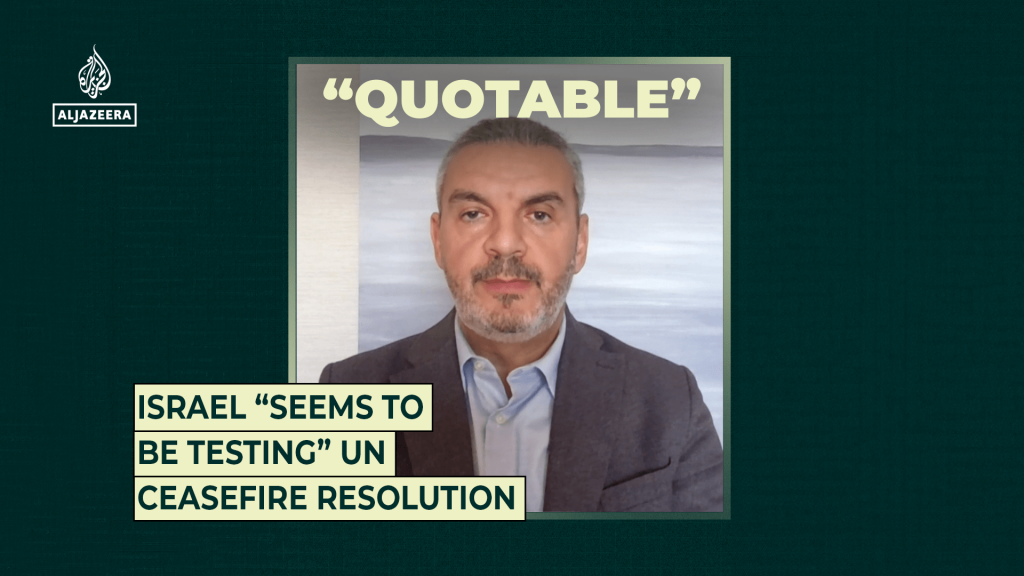
Khaled Elgindy, a senior fellow at the Quincy Institute, says Israel’s strikes on Gaza despite a UN ceasefire resolution raise questions about international will to uphold it. Published On 20 Nov 202520 Nov 2025 Click here to share on social media share2 Share Adblock test (Why?)

